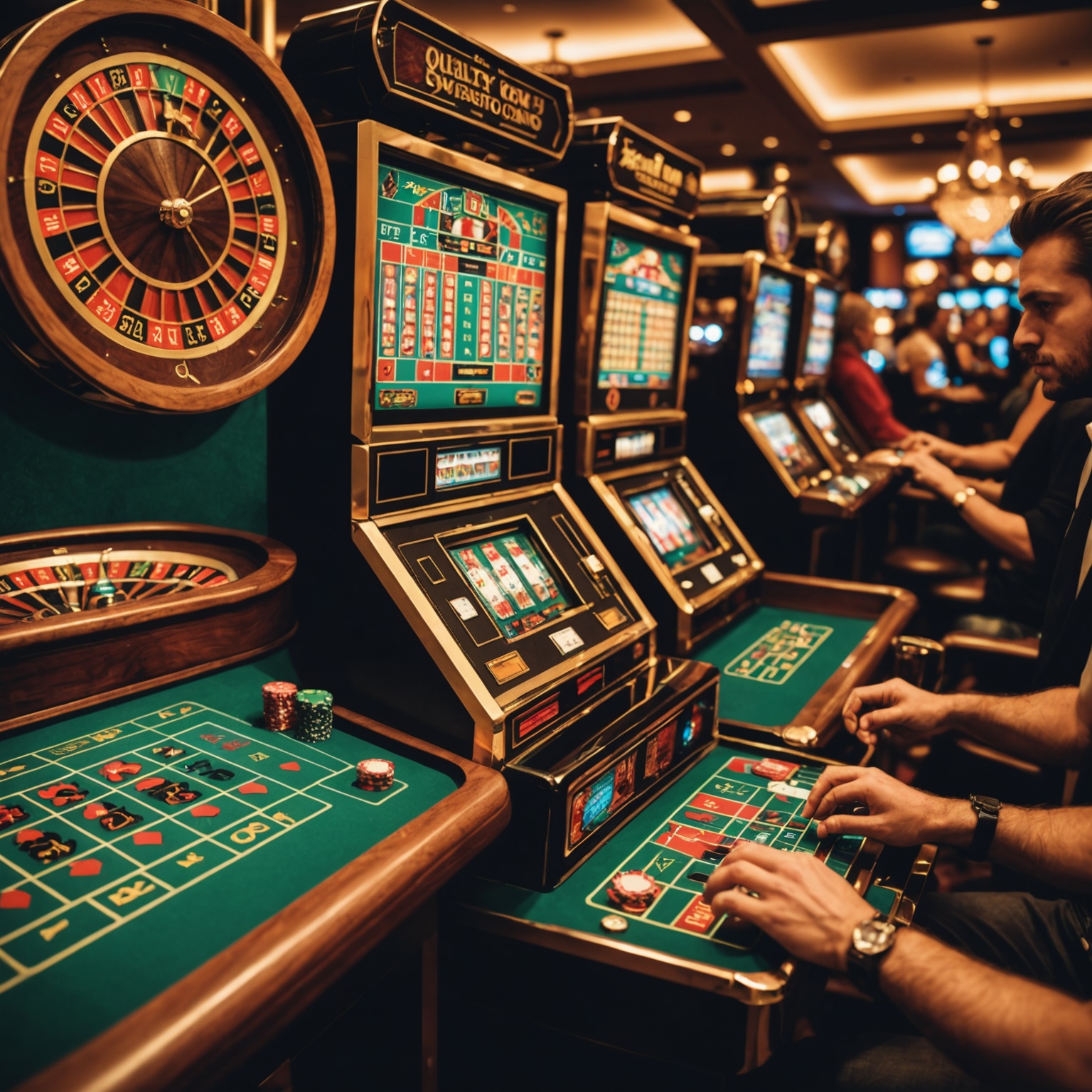
In the dynamic and stimulating world of casinos, wherein luck and strategy intertwine, color and design play a critical role in attracting players. From the moment visitors step inside a casino or access a gaming website, they are enveloped in a sightly feast that captures their attention and lures them to discover more. Vivid colors, engaging graphics, and creative layouts are meticulously crafted to create an environment of thrill and expectation, ultimately improving the gaming experience.
While gamblers move through the ever-changing landscape of casino games, they come across a variety of designs that not only serve visual purposes but also affect feelings and decision-making. Colors like red and yellow symbolize wealth and fortune, while soothing blues and greens can create a more tranquil environment. Understanding how these elements work together enables casinos to create an inviting and energizing atmosphere that encourages players to interact with the games, spend additional time at the tables, and increase their general enjoyment.
The Study of Hue in Gaming Establishments
Color plays a crucial role in the development of gambling games, influencing players’ feelings and responses. Lively and striking colors, such as scarlet and yellow, are often used to stimulate excitement and capture attention. These colors create a sense immediacy and vitality, encouraging participants to engage more eagerly with the experience. casino online non AAMS By strategically selecting colors, designers aim to inspire feelings of joy and anticipation, which can enhance the total gaming experience.
Different hues also have psychological connotations that can impact how gamblers perceive their odds of success. For instance, green is commonly associated with luck and abundance, making it a well-liked choice in activities like roulette and poker games. This link can cause participants to feel more positive and self-assured in their gameplay, ultimately inspiring them to wager more. Grasping these connections allows game designers to craft environments that enhance player happiness and retention.
In addition, the interface of gaming interfaces often utilizes blended colors and opposing shades to guide players’ actions. For case, successful outcomes may be accentuated with striking, opposing hues, creating a visual reward. This technique reinforces successful results and promotes repeated gameplay. By leveraging the psychology of color, casinos can develop games that not only captivate participants but also keep them involved and dedicated in their gaming experience.
Creative Elements that Attract Players
The visual appeal of gambling games is primarily influenced by the use of bold colors. Lively and contrasting colors are strategically chosen to create an inviting atmosphere that captures interest. For instance, reds and golden hues often signify luck and prosperity, which is why they are common in the color schemes of slot machines and game surfaces. These colors not only draw players in, but they also stir emotions related to excitement and expectation, enhancing the overall gaming experience.
In addition to color, the design and layout of casino games play a crucial role in captivating players. Games are designed to be user-friendly, ensuring that players can easily understand the guidelines and gameplay. User-friendly interfaces, along with captivating graphics and motion, help maintain gamer interest and promote longer play sessions. The physical elements, such as the feel of the buttons and the sounds of the games, also contribute to a holistic sensory experience that keeps players engaged.
In conclusion, thematic elements in gaming design can greatly influence player choice. Many casino games are inspired by media, fairy tales, or exploration motifs, featuring symbols and characters that connect with players. These themes create a sense of engagement and connection, making each game feel distinct. When players feel a bond to the theme, they are more likely to choose that game over others, leading to increased participation and enthusiasm within the casino environment.
Case Studies: Successful Gambling Table Game Designs
One noteworthy example of impressive gambling game design is the acclaimed slot machine series themed around blockbuster movies. Games such as those based on the Wizard of Oz and Game of Thrones utilize vibrant colors and top-notch graphics to engage players in familiar narratives. The application of moving visuals and entertaining sound effects grabs the attention of players, building an emotional connection to the theme. This tactic not only encourages longer play but also boosts the overall gaming experience, resulting in increased player retention.
Another successful case is the use of the psychology of color in table games like 21 and roulette. Casinos often develop these games with deep reds and greens, colors traditionally connected with luck and wealth. For instance, the emerald felt on a 21 table provides a calming effect, while the crimson accents in the wheel invite anticipation. This deliberate use of color helps to establish an inviting atmosphere that stimulates players to participate, fulfilling their psychological impulses and increasing their enjoyment.
Finally, social casino games that include social features and lively, dynamic designs have experienced remarkable success in engaging players. Games like Zynga Poker and Slotomania leverage vivid colors and playful animations to forge an inviting online environment. The inclusion of leaderboards, social sharing options, and in-game rewards promotes competition and community, drawing players in for longer sessions. Such designs not only make the games visually attractive but also highlight social connectivity, a vital factor in player retention and engagement within online casino environments.